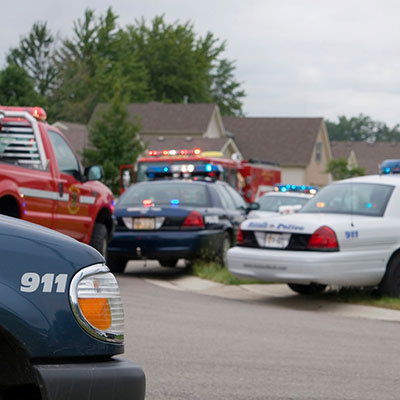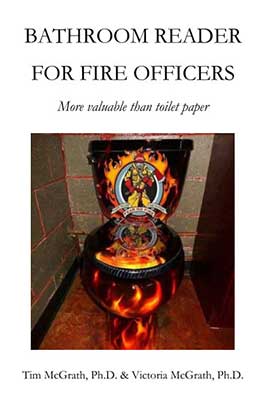Measuring Personnel's Competencies
by Dr. Tim McGrath & Dr. Victoria McGrath

The topic of measuring competencies of personnel continues to raise strong feelings from both those that manage the department and those department members who provide the actual service. Yet everyone seems to agree that a most importance issue is safety of the emergency responders. Therefore, is it adequate for a Chief to base the abilities of the emergency responder personnel on their certifications and monthly training records or attendance at drills, verses their actual ability to not only to perform the task, but also to do so in a safe manner?
Emergency events do not discriminate between volunteer, paid-on-call or career employee status; yet the amount of time available to dedicate to training can be influenced by that status. It is hard to actually determine the quality of training by examining monthly training records. Yet one cannot argue that how you train is how you will perform on the emergency scene. Training and safety are hard to separate when looking at performance.
Before we continue, let's define competencies. Competency is the "quality of being adequately or well qualified physically and intellectually to perform the responsibilities of the position". Thus, the department must define the activities that are deemed necessary to determine if an employee is 'qualified' to perform the essential functions of the position. Thus, competency testing should be based on the individual's job description, which should include the job responsibilities as well as the mental and physical requirements of the job. Different levels of competency need to be developed based upon the roles and responsibilities of the rank; therefore, the competencies required of a firefighter are different than the competencies required of a Captain or Battalion Chief.
When competencies are defined, measuring competencies is not only prudent; it actually can significantly improve your training program. One way to ensure established competencies are understood and individuals within that rank can perform the job functions is to utilize technology in measuring competencies. The use of technology will provide some substantial improvements in most training curriculums, while providing critically important documentation. Unfortunately, we find in many of our department audits, that firefighters are willfully short on training hours, documentation is grossly inadequate, and documentation that the individual can actually perform the function in a safe manner is nonexistent.
Discussion of competency testing often results in many jumping to the conclusion that if an individual lacks the skill associated with a particular task and cannot perform in a safe manner, there should be some type of punitive action. Quite the opposite should occur. Rather, remedial training should be given and documented, until such time the individual can perform the task safely and proficiently. Punitive action should occur if the individual refuses to correct the unsafe behavior.
Just today, the national news covered a story that teacher's tenure should no longer exempt them from demonstrating competency in the topic they teach - not surprising there was great resistance to this concept and competency testing in your department will most likely be met with the same level of enthusiasm. But because it might be unpopular does not exempt you from the responsibility of doing everything in your ability to ensure your personnel are safe.
We pray that no firefighter would lose his or her life or have a serious life altering injury while providing emergency services; but if that occurred, the department and municipality/district would be inundated by more three and four letter agencies (federal and state) then one knew existed conducting fact finding as to the cause of the accident and who is responsible. The Fire Chief would be asked to provide the following documentation pertaining to the individual's training about the accident event:
- Documentation that the individual received training in the evolution(s) in which the death/injury occurred.
- Comprehensive curriculum of the training topic.
- Attendance sheet with the individual's signature indicating he/she attended - not a list of member's names with a check-off box.
- Record of the instructors qualifications to teach the topic.
- Competency documentation showing how the department measured the ability of the individual to safely perform the event in which he or she was injured.
- Historical record showing how frequently this topic was instructed and what other topics supported a safe environment under the conditions found at the accident scene.
Technology and Competencies
How does one find the time to ensure that adequate training is available and actually is occurring? The answer is incorporating technology into your training curriculum. For example, most of us had to learn how to tie knots at some point of our career. Most of us seldom utilized these skills on the emergency scene and therefore, training of this topic might have fallen back in the list of importance and/or frequency. However, what if a department member could go to their home computer and download the curriculum (including demonstration of knot tying); then, at the station turn on the video camera, plug in the flash drive and video themselves tying the knots. Once completed, download the file and send it to the training officer who can review it and issue a competency certificate or indicate opportunities for remedial training. All of these documents (videos and files) would be maintained by the department as validation of training. We have now just taken training from one night/shift to 24/7/365.
People learn differently and technology can open new opportunities beyond the traditional classroom setting. One cannot argue that certain topics must be taught on the training ground with hands on experience; however, combining technology with traditional training methodology should greatly increase the amount of training available to each member.
If your member's safety is really your top priority than I would suggest you have the documentation (including the component of competency testing) that demonstrates you walk the talk!





